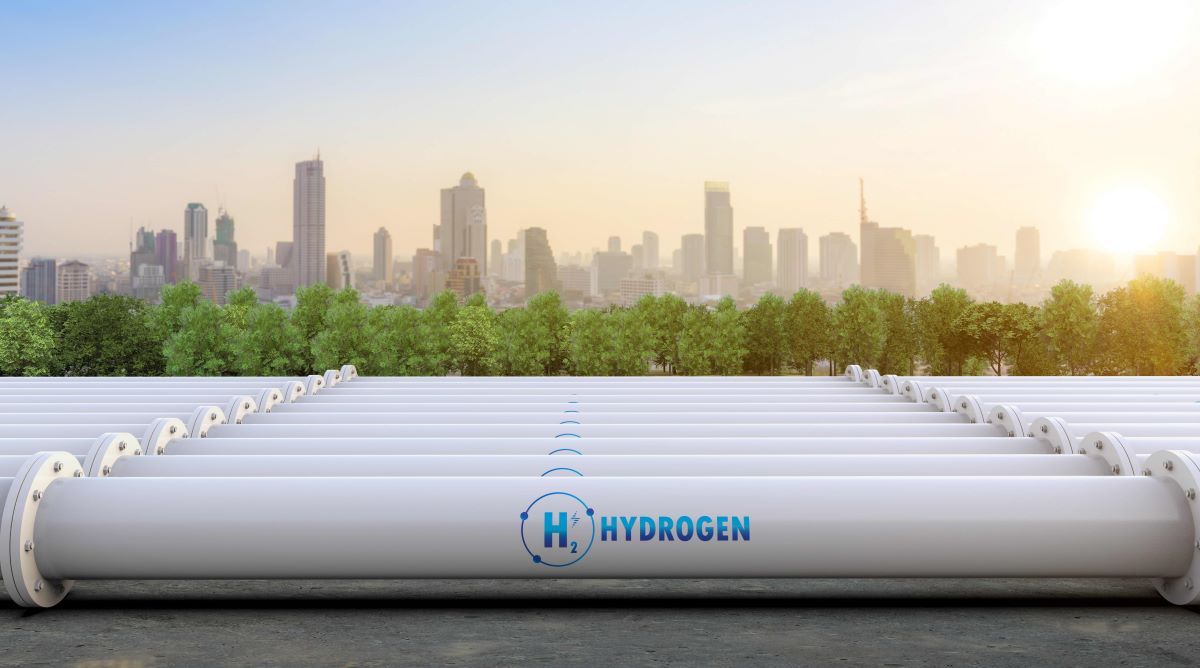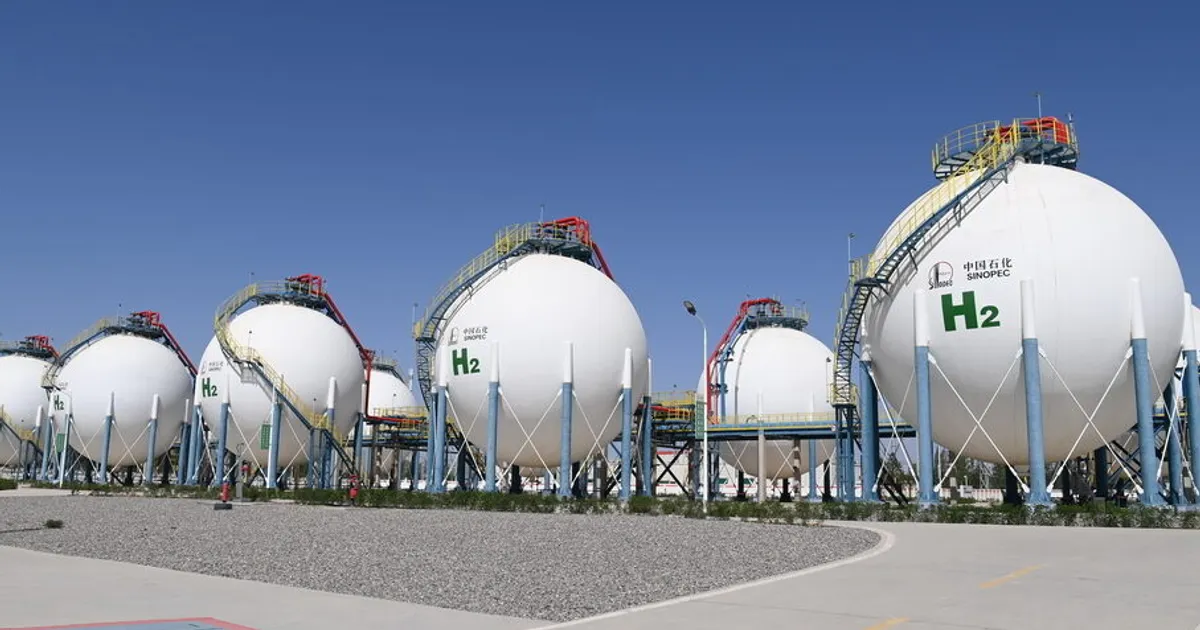On Friday, President Joe Biden and U.S. Secretary of Energy Jennifer Granholm will announce seven regional “hydrogen hubs” that are eligible for up to $7 billion in federal funding, according to senior White House officials.
These hubs will be funded by the Bipartisan Infrastructure Law, which President Biden signed in November 2021.
Hydrogen, the simplest and most abundant element on Earth, typically needs to be separated from other atoms, such as in water (H2O). This separation can be achieved using an electrolyzer powered by electricity or through a process called steam methane reforming using natural gas.
Currently, hydrogen is widely used in fertilizer production and various industrial processes, particularly in the petrochemical industry.
However, because hydrogen produces no carbon dioxide when used in fuel cells to generate energy, it plays a crucial role in the Biden administration’s strategy to reduce greenhouse gas emissions in industries like long-haul trucking, maritime shipping, and aviation.
Hydrogen is also viewed as a potential energy storage solution to balance the intermittency of renewable energy sources like wind and solar.
Nevertheless, hydrogen can only effectively reduce CO2 emissions if it is produced with minimal emissions, which is often not the case today. The new hubs will focus on achieving this goal.
The seven hydrogen hubs, spread across 16 states, are organized by geographic regions that have specific strengths in developing and expanding the U.S. hydrogen industry.
These hubs are not single facilities but rather collections of interconnected assets working together to advance the domestic hydrogen economy.
“The hub design is crucial because it creates clusters of supply and demand close to one another, reducing the challenges of transporting hydrogen over long distances,” explained Adria Wilson, the hydrogen policy lead at Breakthrough Energy.
The $7 billion in federal funding is expected to stimulate an estimated $43 billion in private sector investment, as stated by senior White House officials during a Thursday call with reporters.
Federal funding will be distributed as the regional hubs meet incremental milestones, according to senior White House administrators. Each hub is expected to spur job creation, a benefit that President Biden has frequently highlighted as part of developing a clean economy.

The seven selected hubs are as follows:
Appalachian Hydrogen Hub: Covering parts of West Virginia, Southeast Ohio, and Southwest Pennsylvania, this hub will leverage the region’s abundant natural gas supply.
Located in the industrial heartland, it will supply hydrogen for industrial applications nationwide and is strategically positioned for easy transportation.
California Hydrogen Hub: Spanning from Southern to Northern California, this hub includes the ports of Los Angeles, Long Beach, and Oakland. Ports are vital for decarbonizing the shipping industry, and hydrogen will be key for heavy-duty trucking, which transports goods from these ports.
Gulf State Hydrogen Hub: Centered in Houston, Texas, this hub covers most of the Gulf Coast and Southeast Texas, an area with substantial energy resources for hydrogen production.
Heartland Hydrogen Hub: Located in Minnesota with significant involvement in North Dakota and South Dakota, this hub will utilize the region’s inexpensive and abundant wind resources to produce clean hydrogen, some of which will be used for agricultural purposes, including fertilizer production.
Mid-Atlantic Hydrogen Hub: Spanning parts of Pennsylvania, Delaware, and New Jersey, this hub will capitalize on repurposed infrastructure along the Delaware River.
Midwest Hydrogen Hub: Encompassing Illinois, Northwestern Indiana, and Southwestern Michigan, this hub will produce hydrogen from various sources, including nuclear power. Its strategic location at a major U.S. transportation crossroads adds to its appeal.
Pacific Northwest Hydrogen Hub: Covering Eastern Washington, Northeastern Oregon, and parts of Montana, this hub will produce hydrogen for fertilizer production and may connect with the California Hydrogen Hub.
The hubs that use natural gas to produce hydrogen will implement carbon capture technology, while those relying on renewable energy will use a mix of new and existing clean energy sources from the region.
The hydrogen tax credit included in the Inflation Reduction Act will be crucial for the economic viability of these hubs. Although guidance on the tax credit is expected by the end of the year, it has not yet been released.
“It’s important to view the hubs as a starting point; other factors like the tax credit, further development of connective infrastructure, and additional support for communities and new applications will be essential over the next 18-month planning phase,” Wilson from Breakthrough Energy told.






Leave a Reply